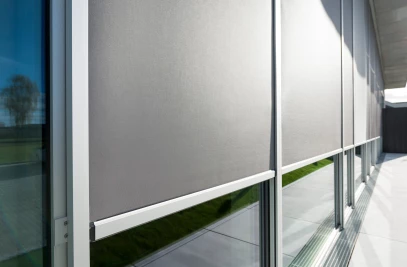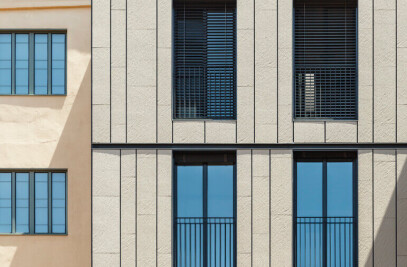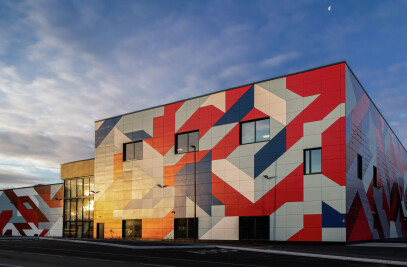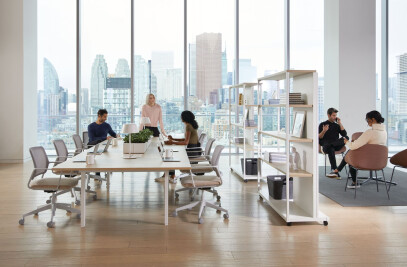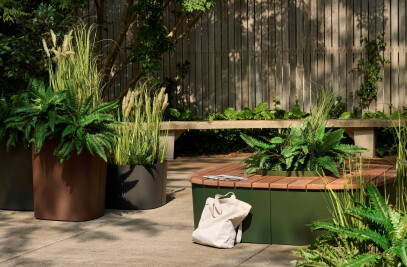Villa Bacchini, this is its original name, was one of the few villas built in the Cervinia area since the 1930s and was destroyed in 1980 by the confluence of two avalanches. Following this event, the Valle d'Aosta Autonomous Region arranged several interventions, which offered the possibility of protecting the area and rebuilding the villa.

The owners at that time, the Bacchini family, chose not to start with the reconstruction and sold what remained of the structure to the Harrison family of London, who bought it to restore the house to its former glory. The exterior of the villa was protected and the reconstruction project - followed by Architect Mariapia Bettiol’s Studio from Aosta in collaboration with the interior contractor Concreta from Valtellina - necessarily had to take this aspect into account.

Engineer Bacchini - the inventor of the famous Allocchio-Bacchini radio, which had known great success in the golden years of the radio - had built the villa in 1936, having the materials transported on the back of a mule, as at the time only a mule track connected the building to the road system.

It was no problem for the Harrison family to rebuild the villa as it was. The new owners were literally fascinated by the old photos reproducing its façade as well as also the famous gardens that surrounded it and which had aroused great interest among Cervinia’s visitors, including Maria Josè Savoia.

IN THE NAME, A DESTINY
The Harrisons' intent was to rebuild the villa and to revive the ancient splendor that surrounded it: to date the villa building has been finished, while the garden is still in process. To signify the commitment to revive this historic building and its magical garden from its ashes, the owners have renamed it La Fenice del Monte Cervino (The Phoenix of the Matterhorn).

Their prior commitment was to respect the concept of the old chalet while giving a high level of comfort using quality materials, entering the category of luxury chalets in the Alpine area. The intention was to have a place to live but also a location to rent to guests, which is why the villa was designed to be self-sufficient. In fact, inside the structure you can find the classic 'residential' functions such as the bedrooms, the living room, the dining room and the kitchen alongside more properly 'hotel' services such as indoor swimming pool, Spa, cinema room, Gym, Ski Room, and Bike Room. A staff is available inside to guests.

THE STRUCTURE OF THE VILLA
The building extends over 1200 square meters on six levels including the basement, where the technical rooms are located. Seven double rooms have been created, as well as a larger living room and a more reserved one, a kitchen that can also be used by guests, a dining room and a buffet area.

The design concept by Architect Bettiol and her team is based on the use of stone and exposed wood as a tradition in the mountains, but at the same time combining rustic, old wood and stone, with rich and modern materials. like velvets and crystals. This modern combination is complemented by a neoclassical touch. The Harrison family loves the notes of Italian Neoclassicism and wanted to recall them with decorations and elements inside their chalet. The central atrium, where the elevator shaft opens, features a parapet in metal and brass with neoclassical motifs, while in the common areas the large wooden frames outlining the walls combine with the stuccoes and plaster decorations recalling the taste and aesthetics of classicism.

The stone originally used in the construction of the villa in the 1930s could be partially reused and integrated with local stone for the external façade, everything was laid dry, with no joints in sight, thus giving additional value to the construction.

THE ROOMS AND THE COMMON AREAS
There are two Master En-Suite Bedrooms on the second floor on either side of the elevator shaft and a King Suite on the top floor. All bedrooms have kingsize beds. At the entrance to the Master Bedrooms there are walk-in closets that directly overlook the bathroom, designed as an open space, except for the bathroom. A peculiar feature of the chalet is that all bathrooms in the bedrooms are north-facing with a view of the Matterhorn and offer the opportunity to relax in the tub looking at the mountain top. The bedrooms, on the other hand, are all facing the valley, thus allowing to open the curtains in the morning towards the sun.

Leather and velvet were chosen alongside a canopy effect for beds, lightened with carved leathers in the wooden frames of the furniture. The King Suite on the top floor, furnished in the same way as the two Master Bedrooms but with more generous spaces, has a small additional room for children.

In the middle floor, four double bedrooms with shower and private bathroom are all equipped with a small walk-in closet. Each room has a different color on the tones of leather and velvets, while wool curtains recall the Alpine tradition in both the colors and designs.

La Fenice can only be accessed by off-road vehicles from the avalanche protection valley or from a private farm road, guests are picked up by SUV or snowmobiles and arrive directly in the garage, where there is a reception area and an underground wine cellar, to make the most of also this access.

An entrance obtained under the glazed swimming pool through which you pass coming from the garage welcomes guests upon their arrival at the Chalet. Here, mood lights frame the door, up to the explosion of light from the swimming pool with the game of colors created by the water. Passing through a corridor of antique larch wood paneling, you reach the elevator shaft where, through a large glass door, you can admire the Ski Room which was conceived as the old choirs of Christian basilicas, with mahogany wood and upholstered thrones of cardinal red capitonné leather, surmounted by a scenic crystal chandelier in colored nuances.

The Spa has a large indoor swimming pool with sauna and Turkish steam room, with an ice bucket very popular with guests, with an outdoor whirlpool surrounded by snow. On the same floor as the Spa there is the gym, the games room and the massage room, all concentrated on the ground floor.

The villa is unique, nothing surrounds it and it stands majestically against a rocky wall framed by the Grandes Murailles. The intervention was much appreciated by the community of Cervinia because it brought back to life a structure that for almost half a century had been part of the architectural identity of the place and that could have been lost forever. The conclusion of the project also put an end to the controversies that arose during the works, when it was not yet clear to non-experts what would have arisen on site.

The close collaboration in the project and implementation phase of the works between the Architect Bettiol’s Studio and the Valtellinese contractor Concreta, as well as their renowned professional skills, have been a guarantee of a precise understanding of the peculiarities expressed by this structure – that is in many ways unique - and the full compliance of the final result with the Client's expectations.

Team:
Architect: Bettiol Architecture
Photography: Courtesy of Bettiol Architecture Studio


Materials used:
Exterior Materials - Facades in treated and sample-dyed fir wood, facades in remnants of local stone partially reusing the ashlars of the old house, roofing in Losa Valdostana, glass parapets.
Interior Materials- larch wood on the floor and walls, plaster stucco, larch false ceilings, mirrors and various fabrics, different types of porcelain stoneware on the floors and walls in the bathrooms




























